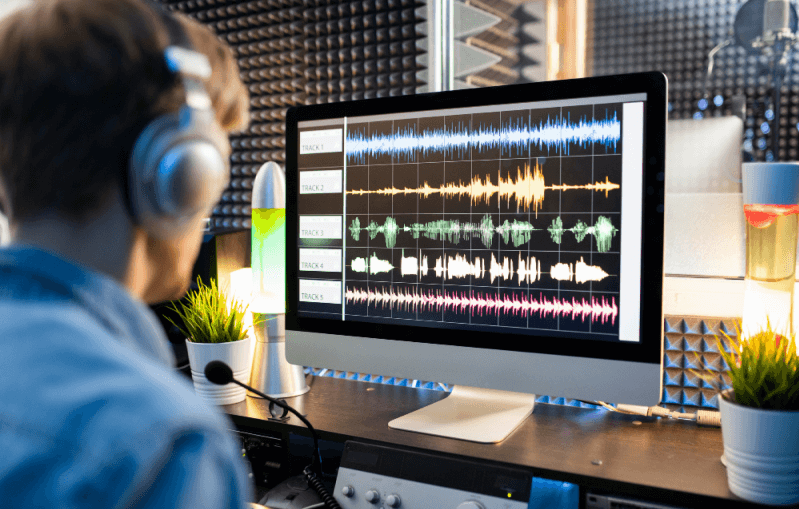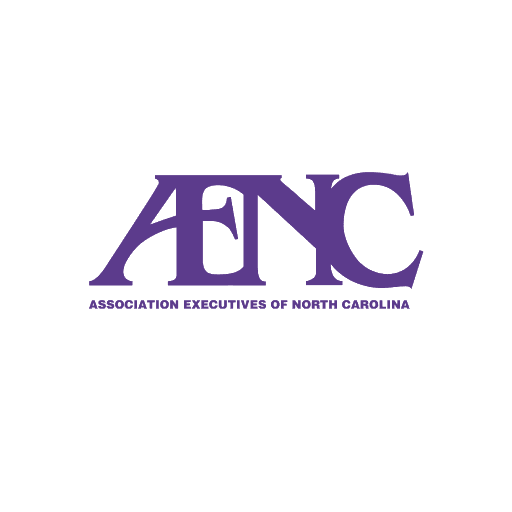How audio visual charlotte nc leverages cutting-edge projection for audience wow factor
Understanding the Incorporation of Audio Visual Innovation in Today's Educational Environments
The integration of audio-visual modern technology in instructional setups has changed the training and finding out procedure. Educators currently have accessibility to devices that accommodate numerous discovering designs, improving trainee engagement and partnership. The unification of these modern technologies provides both chances and obstacles. Understanding exactly how to effectively execute these devices is important. What techniques can instructors employ to take full advantage of the benefits of audio-visual innovation in their class?
The Evolution of Audio-Visual Technology in Education And Learning
As academic requirements advanced over the years, audio-visual modern technology went through substantial makeovers that reshaped the learning environment. Tools such as film projectors and slide programs were the primary methods of integrating visual components right into class. These very early technologies supplied instructors with the capacity to present information dynamically, yet they were limited in access and interactivity.
With the arrival of video cassette recorders in the 1970s, class started to incorporate taped lessons, widening the range of instructional sources. The introduction of desktop computers in the 1980s further changed this landscape, enabling the creation of multimedia presentations and interactive understanding experiences.
The rise of the internet in the 1990s marked a pivotal minute, making it possible for real-time accessibility to a wealth of audio-visual products. Today, electronic tools such as interactive whiteboards and on the internet learning platforms remain to improve the academic experience, cultivating involvement and partnership among learners.
Benefits of Audio-Visual Tools for Diverse Knowing Styles
Audio-visual tools play a necessary role in satisfying varied learning designs by improving visual understanding and improving acoustic interaction. By incorporating photos, video clips, and noise, these technologies produce an even more comprehensive academic atmosphere. This multifaceted method enables teachers to attend to the varied preferences and requirements of students efficiently.
Enhancing Visual Learning
Involvement in the learning process is substantially enhanced via using audio-visual devices, accommodating numerous discovering designs. These devices, such as videos, infographics, and interactive discussions, provide aesthetic stimuli that aid comprehension and retention. Aesthetic students, in certain, take advantage of the unification of images and computer animations, which can simplify complicated principles and boost understanding. Furthermore, audio-visual sources can illustrate real-world applications, making discovering more appropriate and interesting. By integrating shade, activity, and noise, educators can create a dynamic discovering environment that captures pupils' focus and cultivates much deeper cognitive connections. Eventually, the strategic use audio-visual innovation not just supports aesthetic learning yet also improves the total instructional experience for varied students.
Improving Auditory Engagement
A considerable advantage of incorporating audio-visual tools in education and learning is their capacity to improve acoustic engagement amongst pupils. These devices, which incorporate multimedia discussions, podcasts, and interactive sound elements, cater to various learning designs, particularly benefiting auditory learners (audio visual charlotte nc). By incorporating audio and narrative, teachers can produce immersive experiences that catch trainees' focus and strengthen understanding. This interaction is necessary, as it cultivates a deeper understanding of the material and promotes retention. Furthermore, audio-visual tools can promote collective knowing settings, motivating trainees to take part in conversations and share their insights. Inevitably, the consolidation of audio-visual modern technology not only sustains acoustic involvement but also enriches the general academic experience, making finding out more vibrant and efficient for all students
Enhancing Involvement Via Interactive Discovering

Additionally, gamification aspects, such as tests and simulations, can improve motivation and retention, making finding out more satisfying and efficient. These methods not only boost cognitive engagement yet also cater to varied knowing designs, making sure that all students can get involved meaningfully. As a result, interactive understanding atmospheres cultivate a sense of area and belonging, ultimately causing boosted academic results. Via the integration of audio aesthetic modern technology, teachers can change traditional class into lively spaces where trainees thrive and actively form their instructional journeys.
Linking Theory and Experiment Multimedia Resources
Multimedia sources function as a vital link in between theoretical ideas and useful application in educational settings. By boosting involvement, promoting collaborative knowing experiences, and sustaining varied learning designs, these tools develop an extra inclusive and vibrant understanding atmosphere - audio visual charlotte nc. This technique not only promotes much deeper understanding yet also prepares trainees for real-world obstacles

Enhancing Interaction Through Multimedia
Interaction in academic settings substantially enhances when trainers integrate multimedia resources right into their mentor techniques. Using video clips, podcasts, and interactive presentations enhances the finding out experience, allowing students to attach with the material on numerous levels. Multimedia resources accommodate different finding out styles, providing aesthetic, auditory, and kinesthetic stimulations that can hold trainees' focus better than conventional lecture approaches. Furthermore, these resources can simplify intricate ideas, making them much more available and memorable. By incorporating multimedia, educators can create a vibrant class environment that cultivates inquisitiveness and encourages students. Ultimately, the strategic use audio-visual innovation offers to bridge the void in between theoretical understanding and useful application, enhancing the academic experience for both teachers and students.
Assisting In Collaborative Understanding Knowledge
Various studies indicate that collaborative learning experiences noticeably enhance pupil end results when incorporated with multimedia sources. Multimedia devices help with interaction amongst students, enabling them to participate in problem-solving and vital assuming jointly. By utilizing video conferencing, collective systems, and interactive discussions, instructors create atmospheres helpful to teamwork and shared discovering. These technologies allow trainees to communicate their ideas successfully and get prompt feedback, fostering a deeper understanding of the subject issue. Additionally, multimedia sources can present complicated ideas in more digestible styles, promoting discussion and partnership. Consequently, the mix of collaborative discovering and audio-visual modern technology not only improves the educational experience but likewise prepares students for real-world synergy dynamics, stressing the relevance of cooperation and collective knowledge building.
Supporting Diverse Knowing Styles
While traditional mentor techniques usually satisfy a limited range of finding out choices, the combination of audio-visual technology offers an extra inclusive technique to education. By employing multimedia sources such as videos, interactive simulations, and digital discussions, teachers can resolve various finding out styles, including aesthetic, acoustic, and kinesthetic. This flexibility enables differentiated direction, making it possible for trainees to engage with content in manner ins which reverberate with their individual choices. In addition, audio-visual tools can promote deeper understanding by providing numerous representations of intricate concepts. Therefore, students that may have problem with traditional methods can discover different paths to success, promoting a more fair knowing setting that supports scholastic achievement for all learners.
Difficulties in Implementing Audio-Visual Modern Technology
Although audio-visual modern technology holds terrific promise for boosting educational experiences, its implementation typically encounters considerable obstacles. One key concern is the monetary worry related to buying and keeping such equipment, which can strain budgets, especially in underfunded establishments. In addition, insufficient training for teachers can hinder reliable combination, leaving them ill-prepared to use the innovation completely. Technical problems, such as software malfunctions and compatibility problems, may likewise interfere with lessons and discourage both teachers and students. Additionally, differing degrees of student accessibility to modern technology outside the class can create disparities in learning opportunities. The capacity for over-reliance on technology might detract from vital teaching methods, eventually restricting the instructional experience. Resolving these difficulties needs an extensive approach, consisting of ample financing, expert development, and fair accessibility to sources, to ensure that audio-visual technology can be leveraged properly in today's academic setups.
Ideal Practices for Integrating Innovation in the Classroom

In addition, cultivating an interactive setting with collaborative tools motivates trainee involvement and engagement. Making use of varied audio-visual resources caters to numerous learning designs, accommodating visual, auditory, and kinesthetic learners. Regularly evaluating the audio visual charlotte nc impact of modern technology on student discovering assists teachers fine-tune their strategies and adjust to transforming demands. Involving students in the selection of technology advertises ownership and inspiration. By sticking to these finest methods, teachers can produce a vibrant classroom atmosphere that effectively incorporates modern technology and enhances the educational experience for all students.
The Future of Audio-Visual Technology in Education
As classrooms increasingly welcome modern technology, the landscape of audio-visual tools in education remains to progress (audio visual charlotte nc). Future improvements are expected to concentrate on better interactivity and personalization, allowing instructors to tailor learning experiences to specific student needs. Technologies such as increased truth (AR) and online reality (VIRTUAL REALITY) will likely offer immersive learning atmospheres, enhancing pupil interaction and understanding
Man-made intelligence (AI) is positioned to play a considerable role in audio-visual technology by using real-time feedback and flexible learning pathways. This assimilation may assist teachers recognize and address pupil challenges better. Cloud-based systems will certainly assist in easier accessibility to resources and collaboration amongst trainees and educators, no matter place.
Along with these technical advances, expert growth for instructors will certainly be crucial, guaranteeing they are furnished to utilize these devices efficiently. Overall, the future of audio-visual modern technology in education guarantees to produce more dynamic, inclusive, and impactful knowing experiences.
Frequently Asked Questions
How Can Educators Choose the Right Audio-Visual Devices for Their Class?
Picking ideal audio-visual devices needs educators to analyze their instructional goals, think about student demands, evaluate offered technology, and look for recommendations from peers or specialists, ensuring tools properly enhance knowing and involvement within their specific classroom setting.
What Spending plan Factors to consider Are There for Executing Audio-Visual Modern Technology?
Budget considerations for applying audio-visual technology consist of first acquisition costs, upkeep expenditures, training for personnel, and possible software licensing fees. In addition, lasting investment in updates and substitutes must additionally be factored right into financial planning.
Exist Certain Training Resources for Teachers on Audio-Visual Equipment?
Several institutions provide training sources for instructors on audio-visual devices, consisting of online programs, workshops, and educational guides. These resources aim to improve educators' abilities and self-confidence in successfully integrating modern technology right into their training practices.
Just how Do We Determine the Effectiveness of Audio-Visual Technology in Understanding?
Determining the efficiency of audio-visual modern technology in discovering entails assessing trainee interaction, comprehension, retention prices, and total scholastic efficiency. Surveys, assessments, and observational studies can supply important understandings right into its effect on instructional results.
What Prevail Misconceptions Regarding Audio-Visual Modern Technology in Education?
Usual misconceptions regarding audio-visual technology in education consist of the belief that it guarantees interaction and discovering end results, in addition to the presumption that all pupils profit similarly, overlooking private understanding choices and needs.